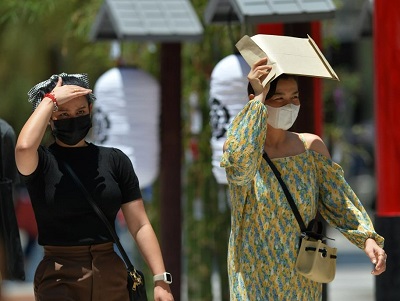New Delhi, (Asian independent) Even as the UN issued a red alert on climate change, doctors on Wednesday raised alarm over the significant health risks associated with increasing global temperatures.
The latest report from the World Meteorological Organization (WMO), showed record-breaking “greenhouse gas levels, surface temperatures, ocean heat and acidification, sea level rise, Antarctic sea ice cover and glacier retreat” in 2023.
The report warns of a ‘high probability’ that 2024 will be another record-hot year. Climate reports have shown January 2024 already to be the warmest on record.
“Climate change poses significant health risks, particularly in the realm of respiratory health. Climate change exacerbates air pollution, which worsens conditions of people who already have respiratory ailments like asthma, pneumonia, lung cancer, etc,” Dr Vikas Maurya, Director and HoD Pulmonology, Fortis Shalimar Bagh, told IANS.
“Climate change also includes worsened air quality due to an increase in ground-level ozone and particulate matter pollution, triggering respiratory problems,” said Dr Kuldeep Kumar Grover, Head of Critical Care and Pulmonology, CK Birla Hospital, Gurugram.
The experts further noted that a short winter season and an early onset of summer will have an impact on the viruses’ behavioural patterns leading to a spike in infectious diseases.
“Climate change alters the geographic distribution and seasonality of vector-borne diseases such as dengue fever and Zika virus, which can have respiratory manifestations in some cases,” Dr Vikas said.
2023 was not only the Earth’s hottest year ever recorded, but it was also the first year in which the world was close to 1.5 degrees Celsius (1.48 degrees C) hotter than the pre-industrial average (1850-1900).
But the year 2024, many scientists believe to be humanity’s first year beyond the UN-mandated 1.5 degrees C.
Dr. Kuldeep told IANS that the increase in global temperatures will also spur heatwave events, which will become more frequent and intense.
“This can lead to an increased incidence of heatstroke, dehydration, and the worsening of cardiovascular and respiratory diseases”.








